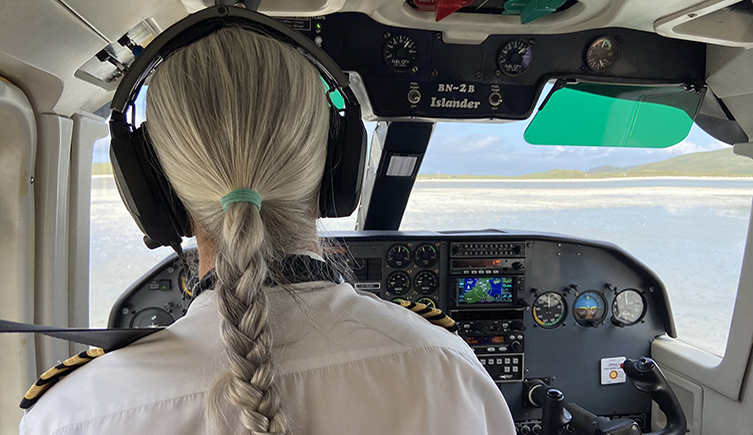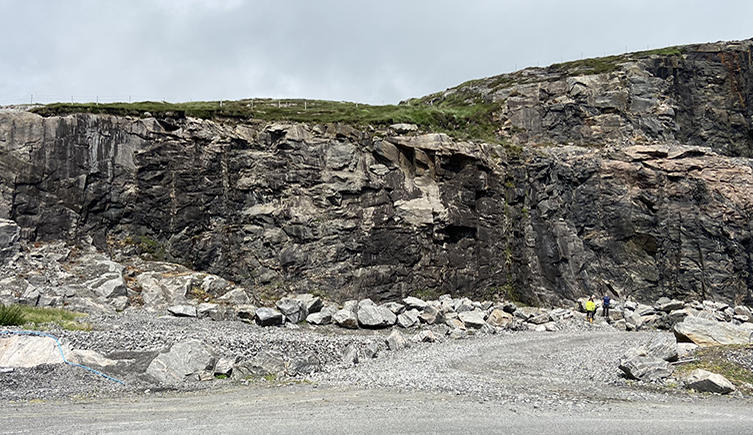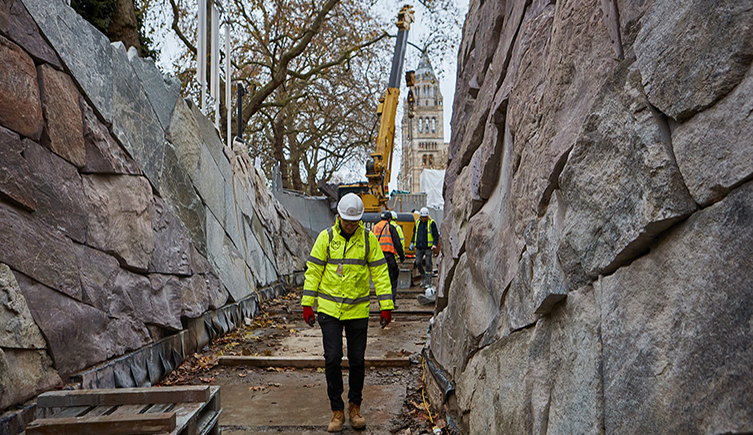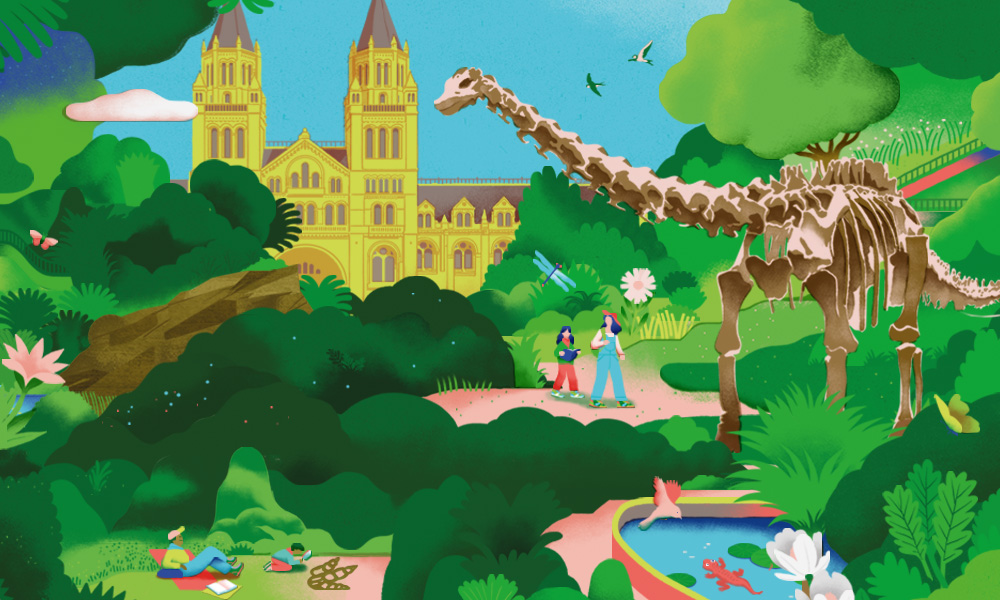CollectionsTravelling 2.7 billion years back in time on the search for the UK’s oldest rock
Our scientists have been looking for a rock that formed so long ago it was on Earth before complex life lived on land.
Called Lewisian gneiss, it’s the oldest rock in the UK. It’s found in the northwest extremity of the Scottish mainland and the Western Isles.
The gneiss’s new home is in our gardens, where it forms part of a geological and botanical journey through time. Join our scientist Paul Kenrick on his journey to the Outer Hebrides to find this striking, banded rock.
A flight on a small plane and a beach landing
The journey to find the rock starts in Scotland after a drive from Glasgow to Oban. A Natural History Museum scientist, a professional rock wrangler and four creators of our new gardens wait at a tiny airport. They’re waiting for the tide to recede on the island of Barra in the Outer Hebrides, where the beach will double up as their landing strip.
Barra is a small island on the southernmost tip of the Hebrides. Nearby, the island of Vatersay is even smaller, with only 90 inhabitants. The destination for the team is an old quarry where they know some Lewisian gneiss boulders lie, left over from when the quarry was used to build a road between the two islands in the 1990s.
The island of Barra is so tiny you can drive around its only road in 40 minutes. The team’s beach destination is on the western side of the island.
“Once we boarded the plane, the journey was short and easy and when we got to the landing strip, the pilot flew over the beach to check there wasn’t too much water, or any debris washed up,” says Paul. This would have made it unsafe to land.
He adds, “it was a wet landing, but when we pulled up onto drier beach, it was OK”.
“We were really lucky with the weather. We got a bright sunshiny day that was in between two thunderstorms.”
The rock for the gardens
The Lewisian gneiss complex is a group of rocks that range from 1.7 to 3.0 billion years old. The rocks on Barra formed in the Archaean Eon more than 2.7 billion years ago.
“When we got close to the rocks in the quarry, we could see their banding was typical of Lewisian gneiss,” says Paul.
Lewisian gneiss is metamorphic rock, which means it was formed by being heated up and put under great pressure, deep within Earth’s crust. This process causes minerals to crystallise out, resulting in bands of different colour in the rock. The banding forms perpendicular to the pressure.
The rock for the garden couldn’t be bigger than 10 tonnes, as this is the upper limit of what the chosen site can accommodate.
After some consideration, the team select a rock weighing six to seven tonnes.
“It has lovely banded patterns that glow with colour when wet,” says Paul.
“The rock is really quite beautiful.”
The travels continue
The chosen boulder was put on a lorry on the ferry and taken into storage until it could be installed in our gardens.
After Barra, the team drove from Oban to Inverness and around the Moray Firth to visit some other quarries. They saw a 240-million-year-old rock formed in the Triassic Period, a granite and a glacier erratic – a rock dumped somewhere by a glacier.
Journey through time in our new gardens
We've created a geological journey through time as part of the Urban Nature Project. To build this, we've looked for rocks formed during particular moments in Earth’s history.
Using these rocks, as well as plants and sculptures, we tell the story of life on Earth.
Paul adds, “our Evolution Timeline runs from the Transport for London tunnel entrance and extends across the gardens. The geology is incorporated into the garden landscape.”
You can take the geological walk back in time in our new gardens.







Don't miss a thing
Receive email updates about our news, science, exhibitions, events, products, services and fundraising activities. We may occasionally include third-party content from our corporate partners and other museums. We will not share your personal details with these third parties. You must be over the age of 13. Privacy notice.
Follow us on social media